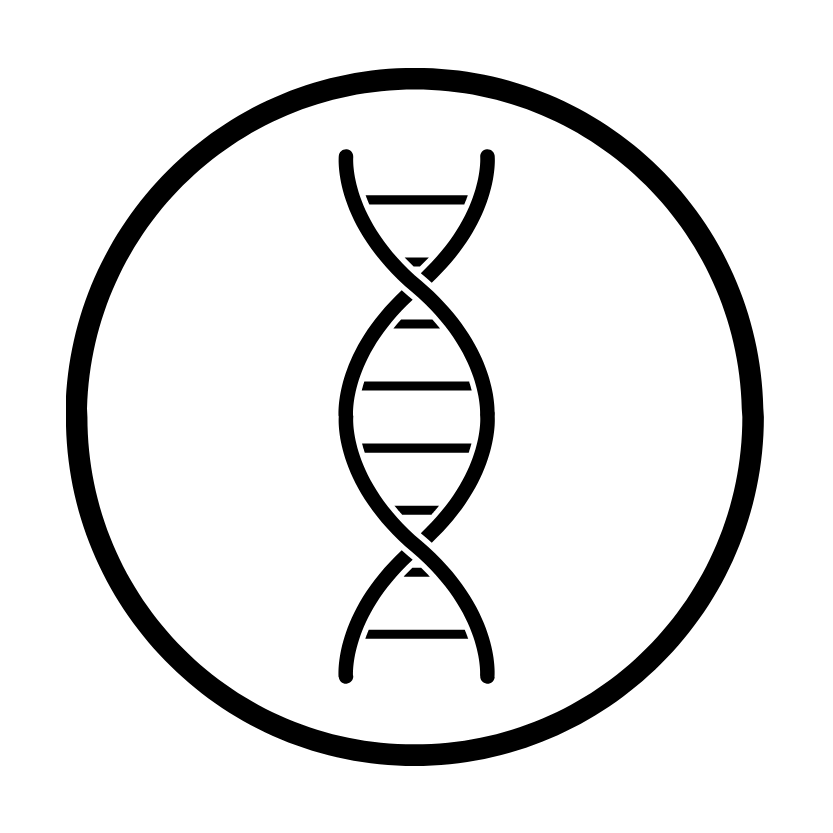Hemochromatosis Report
Hemochromatosis Report
Couldn't load pickup availability
Hemochromatosis is a chronic alteration of iron metabolism which, if left untreated (or in advanced stages), can lead to serious organ damage (especially liver and pancreas). There are different types, all determined by mutations in specific genes involved at various levels in iron homeostasis. The most common type of hemochromatosis (HH - Hereditary Hemochromatosis or type 1) is related to the HFE gene and is transmitted in an autosomal recessive manner.
The mutation alters the sensitivity of a specific protein to dietary iron, causing excessive intestinal absorption.
The second type of hemochromatosis (juvenile) differs in the 2A and 2B forms, respectively linked to mutations in the HJV genes (which codes for hemojuvelin, involved in iron absorption but with roles not yet fully known) and HAMP (hepcidin, a protein that regulates iron levels as needed). Also transmitted in an autosomal recessive manner, this form is quite rare and occurs in adolescence. On the other hand, type 3 hemochromatosis is associated with mutations in the transferrin receptor (TFR2), which regulates the saturation level of an iron-binding protein called transferrin.
Type 4 is related to autosomal dominant mutations in the SLC40A1 gene, encoding ferroportin (responsible for transporting iron out of cells).
Finally, type 5 hemochromatosis is caused by the FTH1 gene which codes for a subunit of ferritin (the intracellular iron storage protein).
Other genes implicated in various pathways of iron metabolism are still being studied and their role as contributors to the onset of hemochromatosis is gaining increasing acceptance.

What You Get
-
Wellness Report
See a reportThe Wellness Report clarifies which habits are best suited to your genome, with actionable insights to live a better life.
-
Scientific Fitness Report
See a reportThe Fitness report gives you actionable advice on training, sports, fitness and physical activity. This will help you develop the right workout for you based on your whole genome.
-
Nutrigenomics Report
See a reportLearn about the relationships between food groups and your genes. Using this report, you can create the most effective and personalized diet with a specialist.
-
Health and Predispositions
See the reportLearn more about your risk to develop +50 diseases and conditions. Start taking a proactive approach to your health with our actionable insights.
How it works
-
1.
Using a simple at home blood sample, we can collect the 100% of your DNA and analyze the genetic sequence in our lab.
-
2.
The sequence is divided into several parts, amplified, grouped in clusters and then sequenced.
-
3.
This sequencing process reveals the order of nucleotides that make up the original DNA sample.
-
4.
We then compare the genome with a generic and globally recognized reference DNA sequence.

Simple Blood Sample Collection
Painless, quick at home sample collection. User friendly device with CE-IVD mark and FDA approval.
Simply follow the packaging instructions and send the sample back using the pre-paid returns label.
Genomic Consultation Service
Additional reports
Check out the full range of our additional reports, available upon completion of the Genome Test.
-
Example product title
Regular price €19,00 EURRegular priceUnit price / per -
Example product title
Regular price €19,00 EURRegular priceUnit price / per -
Example product title
Regular price €19,00 EURRegular priceUnit price / per -
Example product title
Regular price €19,00 EURRegular priceUnit price / per
So - I am happy to give Dante 5/5 this time round because they delivered 2 sets of Whole Genome Sequencing in UNDER 4 WEEKS!
⭐⭐⭐⭐⭐
If your health service/doctor is giving you the runaround or displaying utter incompetence then consider getting a WGS done at Dante If your health service/doctor is giving you the runaround or displaying utter incompetence then consider getting a WGS done at Dante
⭐⭐⭐⭐⭐
Two out of 3 kits indeed generated results within the promised 2 weeks. The third kit ran into problems, but Dante's lab has demonstrated excellent customer service.
⭐⭐⭐⭐⭐
Love Dante Labs - Duston Stanczyk
⭐⭐⭐⭐⭐
Bought 2 more kits during 2019 Black Friday sale, both results were delivered well befor advertised lead times with quality above 30x. - Jozef Kohut
⭐⭐⭐⭐⭐
